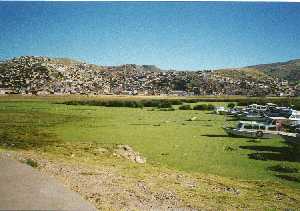 汚水が無処理で流れ込み、栄養塩類が 蓄積したPuno湾は、水草で覆われていた。 The untreated waste water had made the water of Puno Bay rich in nutrients to grow water plants to cover the whole water surface. |
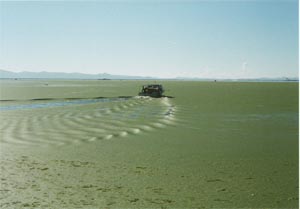 水草をかきわけて出て港を出て行く定期船。 The boat departure in water plants. |
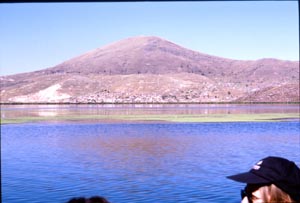 |
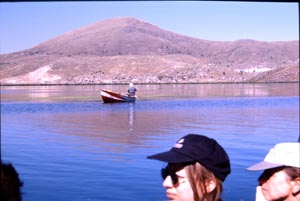 |
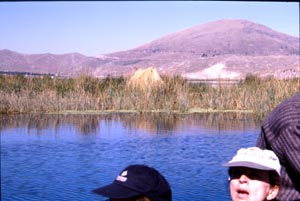 |
|
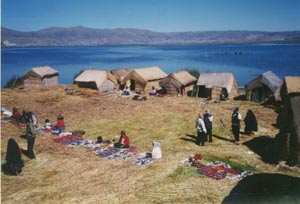 Urosの人たちは、イグサに似た水草(しばしば「アシ」 と言われるが、イグサに近いと思われる。)で浮き島を 作って暮らしている。観光客の入島料やみやげ物 の購入は重要な現金収入になっているものと 思われる。Taquile島に行く船はここに立ち寄る。 Uros people make floating islands with grass to live. Entrance fee to the islands and sale of souvenirs seem to be important cash income for them. The boat to Taquile stops at one of such floating islands on the way. |
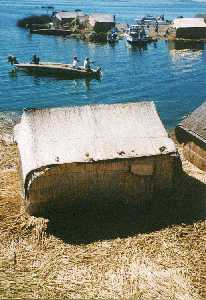 Urosの島の人には、丸太を組んだ展望台 が作ってあった。家も水草のマットで できている。船も浮き島と同じ水草で 作ってあり、有料で観光客を乗せる。 A wooden observatory in this island allowed tourists have a such a view. Here the houses are made of water grass mats. Boats which tourists can ride with some charge are also made of the grass. |
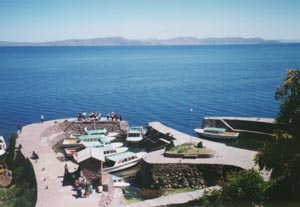 Taquile島の港。この島のコミュニティーは団結していて、 観光客は、桟橋に着くと、まず清掃協力金を支払う。 この島では、数件あるレストランでも、統一価格。 この島のレストランのミント・ティーは、ミントの 香りのする灌木の枝をお湯に入れたもの。 The port of the Isla Taquile. Tourists must pay environmental conservation fee at the port. The well orgnized and disciplined community of this island set fixed prices even at the restaurants in the island. (The mint tea here is made with a small twig from a shrub which smells like mint. |
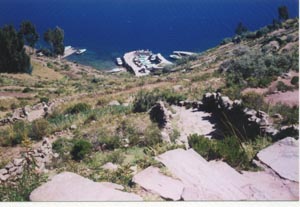 集落は丘の上にある。 集落入り口から見下ろした港。 People live on the hills. This photo was taken at the entrance to a village over the port. |
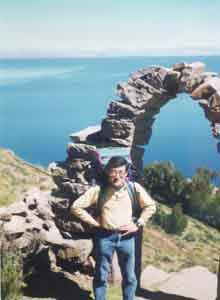 急坂を登って集落入り口に到着。 At the entrance to the village after ascent of a steep slope from the port. |
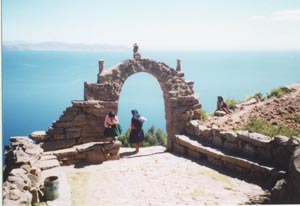 集落入り口他には、このような門がいくつかある。 This kind of gates are seen at the entrance to communities. |
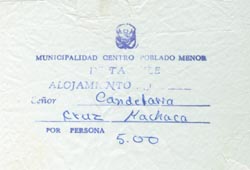 宿泊料領収書。集落入り口には民泊受付所があり、 その日の当番の家が割り当てられる。 Receipt of the accommodation fee. Accommodation is provided by private villagers. At the entrance to the village is a tourism office where specific accommodation is assigned. |
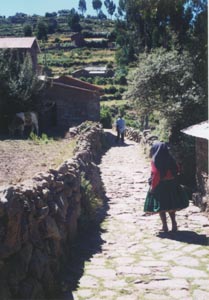 この日の当番の家の奥さんについて民泊に向かう。 After the payment, I followed the wife of the host family to her home. |
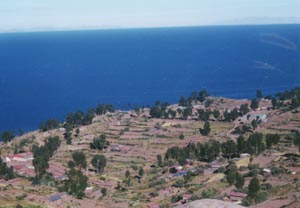 Taquile島は、ほぼ全域で段々畑がよく開発されている。 前記のとおり、家々はそのような丘の上部にある。 The Isla Taquile is well cultivated on a bit steep slopes. People live near the top of the hills. |
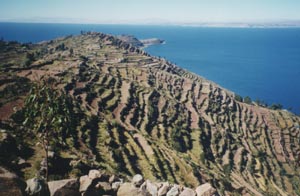 |
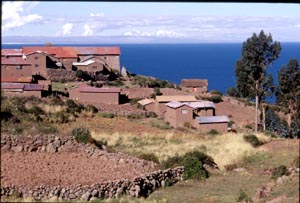 |
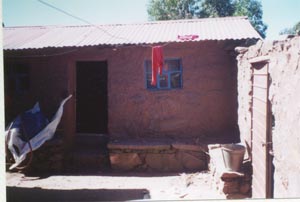 宿泊させてもらった家庭は、石を積み重ね、 その表面を土で覆った塀に囲まれていた。 客室としてあてがわれたのは、その家の離れ。 なお、トイレは、塀の外。 This is where I stayed. Each household is surrounded by stone/mad walls with a toilete outside of the walls. The main house of my host family was two-story while this separate guest room was one-story. |
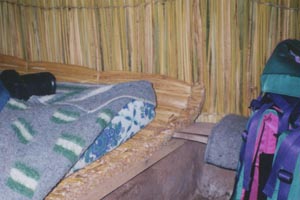 民泊の部屋のベッド。壁土の上にも水草のマットが 張られ、ベッドにも水草のマットが敷かれていた。 The walls were covered with grass mats. And the bed was also covered with a grass mat. |
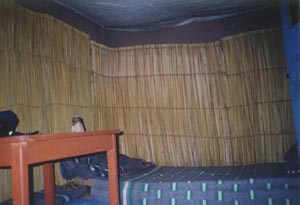 |
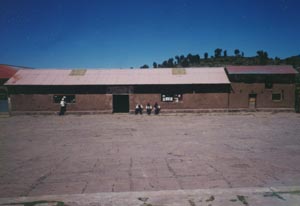 集落の中央の広場には、編み物の共同販売所。 この島は、優れた手編み物の産地。細かく密に 編まれた製品は、他の産地のものに比べて 値段も高い。模様にも色々な工夫をしている。 The communal shop of sweaters and other knits. The islanders are quite skilled in knitting. Their products are precise and well designed. The prices are thus high. |
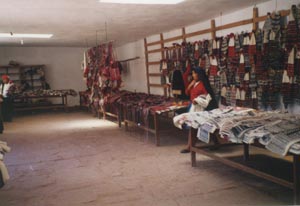 共同販売所の中 Inside the communal shop. |
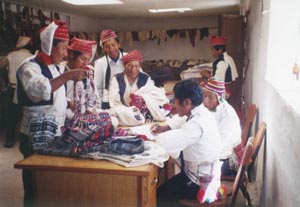 この島では、編み物は男性の仕事。歩きながらでも 編み物をしている。それぞれの作品を持ち込み、 整理番号をつけてもらい、それが売れた時に収入に なる様子。民泊先でも、そこの主人が、自分のものを 買うようにと勧める。共同販売所では手数料を 取られるために、直売したいということもあろう。 また、いろいろ工夫し、努力して作った自分の作品に 自信と誇りをを持っていて、売れるのが楽しみな様子。 It is men who knits. They are always knitting hard even in walking. They have now brought their products to the shop so that each product is given a number tag special to each person so that the producer receives money when the product has been sold. |
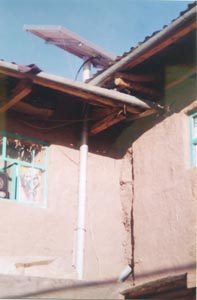 少なからぬ家では、このように太陽光発電パネルを 持っていた。私の民泊先でも、その電力を利用して、 1日中ラジオをつけ、また、夜は、居間で蛍光灯を こうこうとともしていた。編み物や民泊で得た現金収入 がその背景にあると思われる。 Not a small number of families have such a solar panel. My host family also had one, which allowed their radio listened to all day and their florescent light to shine at night. |
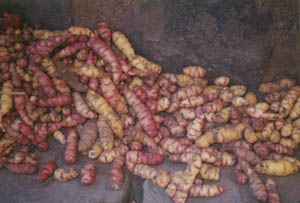 民泊で見かけた在来種と思われるジャガイモ。 Potatos seen at my host family, which seem to be tranditional breed. |
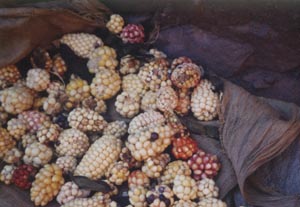 同じくトウモロコシ。 Corn |